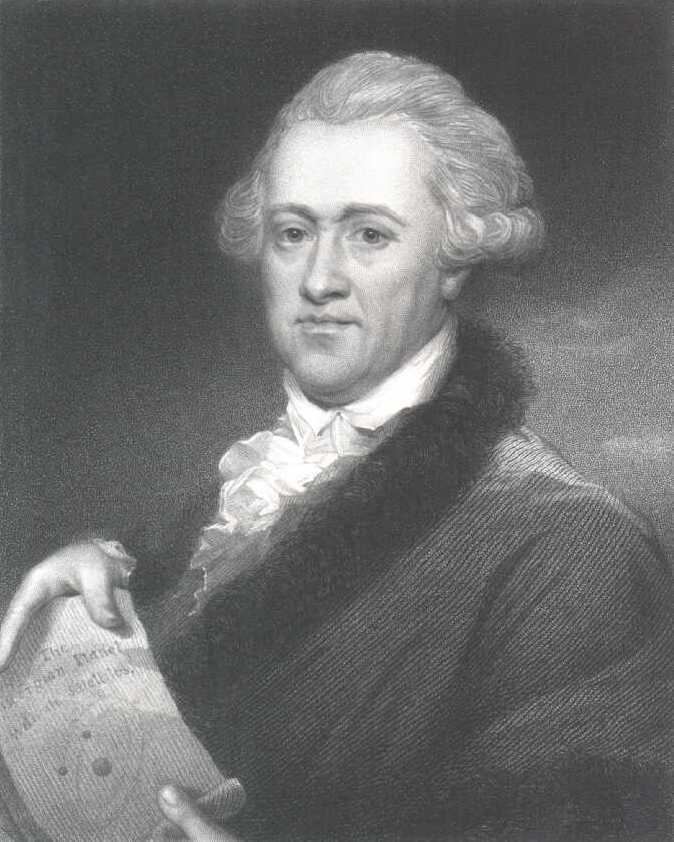 | ||
Born Friedrich Wilhelm Herschel15 November 1738Hanover, Brunswick-Luneburg, Holy Roman Empire ( 1738-11-15 ) Nationality Hanoverian; later British Known for Discovery of UranusDiscovery of infrared radiationDeep sky surveysFirst President of the Royal Astronomical Society Similar People John Herschel, Caroline Herschel, Charles Messier, John Louis Emil Dreyer, Sir William Herschel - 2nd Baro | ||
Sir william herschel the king s astronomer david rives
Frederick William Herschel, (German: Friedrich Wilhelm Herschel; 15 November 1738 – 25 August 1822) was a British astronomer and composer of German and Czech-Jewish origin, and brother of fellow astronomer Caroline Herschel, with whom he worked. Born in the Electorate of Hanover, Herschel followed his father into the Military Band of Hanover, before migrating to Great Britain in 1757 at the age of nineteen.
Contents
- Sir william herschel the king s astronomer david rives
- William herschel symphony no 14 in d major 1762
- Early life and musical activities
- Astronomy
- Double stars
- Uranus
- Deep sky surveys
- Works with his sister Caroline
- Herschels telescopes
- Reconstruction of the 20ft telescope
- Life on other celestial bodies
- Sunspots climate and wheat yields
- Further discoveries
- Discovery of infrared radiation in sunlight
- Biology
- Family and death
- Memorial
- Musical works
- Named after Herschel
- References
Herschel constructed his first large telescope in 1774, after which he spent nine years carrying out sky surveys to investigate double stars. The resolving power of the Herschel telescopes revealed that the nebulae in the Messier catalogue were clusters of stars. Herschel published catalogues of nebulae in 1802 (2,500 objects) and in 1820 (5,000 objects). In the course of an observation on 13 March 1781, he realized that one celestial body he had observed was not a star, but a planet, Uranus. This was the first planet to be discovered since antiquity and Herschel became famous overnight. As a result of this discovery, George III appointed him Court Astronomer. He was elected as a Fellow of the Royal Society and grants were provided for the construction of new telescopes.
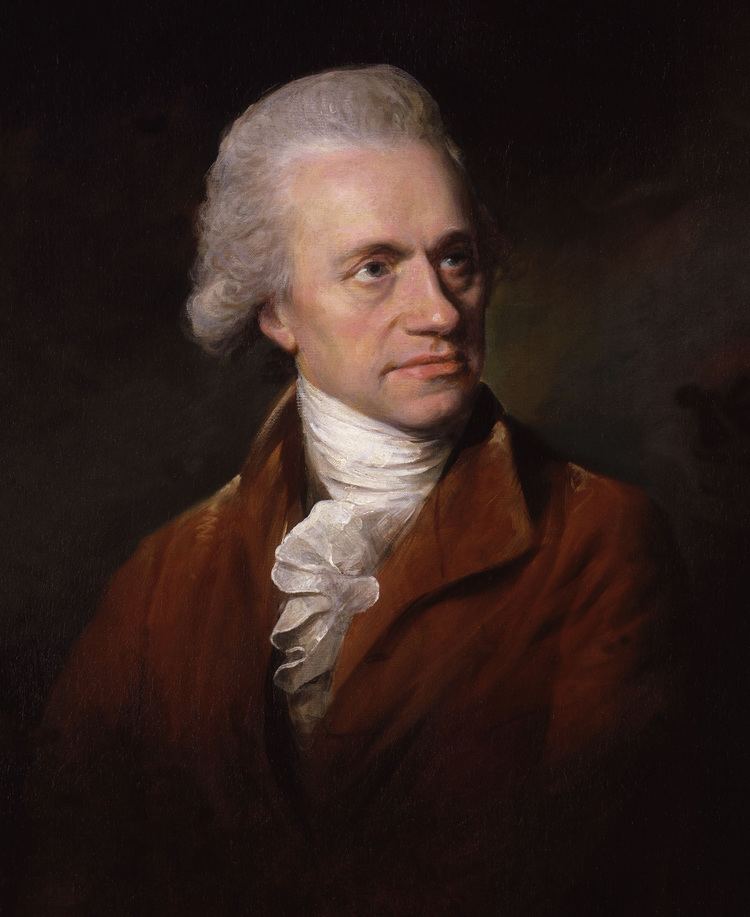
Herschel pioneered the use of astronomical spectrophotometry as a diagnostic tool, using prisms and temperature measuring equipment to measure the wavelength distribution of stellar spectra. Other work included an improved determination of the rotation period of Mars, the discovery that the Martian polar caps vary seasonally, the discovery of Titania and Oberon (moons of Uranus) and Enceladus and Mimas (moons of Saturn). In addition, Herschel discovered infrared radiation. Herschel was made a Knight of the Royal Guelphic Order in 1816. He was the first President of the Royal Astronomical Society when it was founded in 1820. He died in August 1822, and his work was continued by his only son, John Herschel.

William herschel symphony no 14 in d major 1762
Early life and musical activities
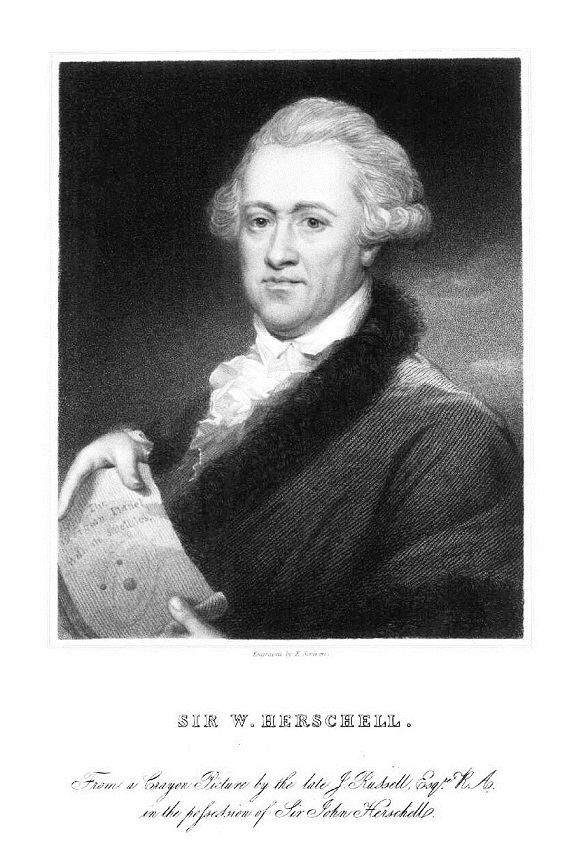
Herschel was born in the Electorate of Hanover in Germany, then part of the Holy Roman Empire, one of ten children of Isaac Herschel by his marriage to Anna Ilse Moritzen, of German ancestry. His father's family traced its roots back to Jews from Moravia who converted to Christianity in the seventeenth century, and they themselves were Lutheran Christians. His father was an oboist in the Hanover Military Band. In 1755 the Hanoverian Guards regiment, in whose band Wilhelm and his brother Jakob were engaged as oboists, was ordered to England. At the time the crowns of Great Britain and Hanover were united under King George II. As the threat of war with France loomed, the Hanoverian Guards were recalled from England to defend Hanover. After they were defeated at the Battle of Hastenbeck, Herschel's father Isaak sent his two sons to seek refuge in England in late 1757. Although his older brother Jakob had received his dismissal from the Hanoverian Guards, Wilhelm was accused of desertion (for which he was pardoned by George III in 1782). Wilhelm, nineteen years old at this time, was a quick student of the English language. In England he went by the English rendition of his name, Frederick William Herschel.
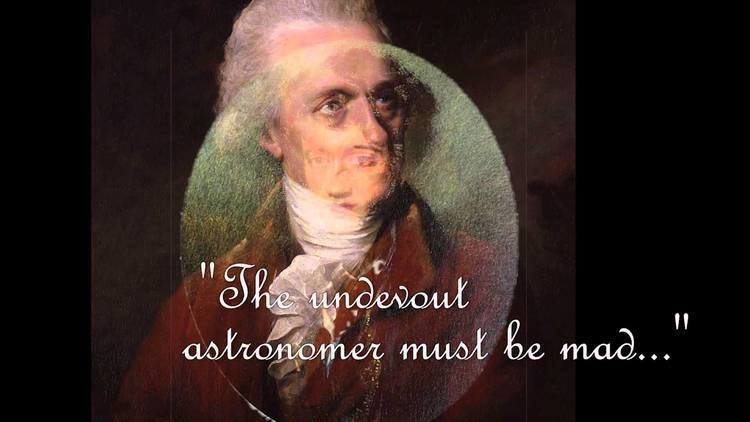
In addition to the oboe, he played the violin and harpsichord and later the organ. He composed numerous musical works, including 24 symphonies and many concertos, as well as some church music. Six of his symphonies were recorded in April 2002 by the London Mozart Players, conducted by Matthias Bamert (Chandos 10048).
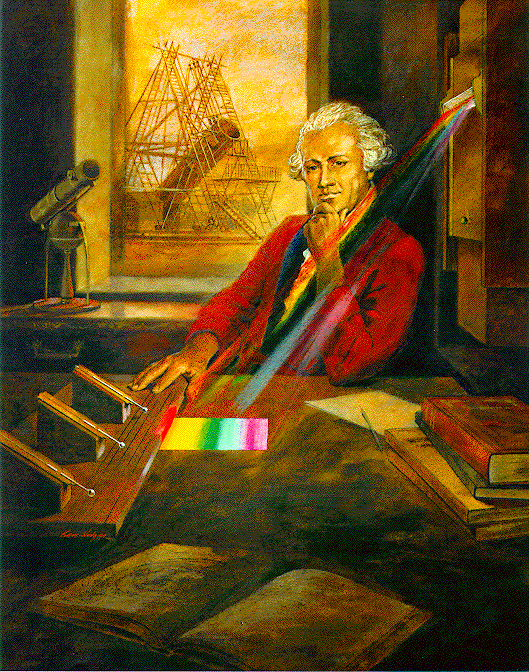
Herschel moved to Sunderland in 1761 when Charles Avison immediately engaged him as first violin and soloist for his Newcastle orchestra, where he played for one season. In ‘Sunderland in the County of Durh: apprill [sic] 20th 1761’ he wrote his Symphony No. 8 in C Minor. He was head of the Durham Militia band 1760–61 and visited the home of Sir Ralph Milbanke at Halnaby Hall in 1760, where he wrote two symphonies, as well as giving performances himself.

After Newcastle he moved to Leeds and Halifax where he was the first organist at St John the Baptist church (now Halifax Minster). He became organist of the Octagon Chapel, Bath, a fashionable chapel in a well-known spa, in which city he was also Director of Public Concerts. He was appointed as the organist in 1766 and gave his introductory concert on 1 January 1767. As the organ was still incomplete, he showed off his versatility by performing his own compositions including a violin concerto, an oboe concerto and a harpsichord sonata. The organ was completed in October 1767. His sister Caroline came to England in 1772 and lived with him there in New King Street, Bath. The house they shared is now the location of the Herschel Museum of Astronomy. His brothers Dietrich, Alexander and Jakob (1734–1792) also appeared as musicians of Bath. In 1780, Herschel was appointed director of the Bath orchestra, with his sister often appearing as soprano soloist.
Astronomy
Herschel's music led him to make the acquaintance of an amateur violinist, the Rev. John Michell of Thornhill, a former leading Cambridge mathematics professor who was already noted as England's leading geologist and was developing groundbreaking views on astronomy and the construction of telescopes. Michell sparked Herschel's interest in mathematics and lenses. Michell was later (1783) to publish work on 'dark stars' (black holes). After Michell's death in 1793, Herschel bought a ten foot long, 30-inch reflecting telescope from Michell's estate which he had to reconstruct due to damage in transport.
His interest in astronomy grew stronger after he made the acquaintance of the English Astronomer Royal Nevil Maskelyne. He started building his own reflecting telescopes and would spend up to 16 hours a day grinding and polishing the speculum metal primary mirrors. He "began to look at the Planets and the stars" in May 1773 and on 1 March 1774 began an astronomical journal by noting his observations of Saturn's rings and the Great Orion Nebula (M 42).
Double stars
Herschel's early observational work soon focused on the search for pairs of stars that were very close together visually. Astronomers of the era expected that changes over time in the apparent separation and relative location of these stars would provide evidence for both the proper motion of stars and, by means of parallax shifts in their separation, for the distance of stars from the Earth. The latter was a method first suggested by Galileo Galilei. From the back garden of his house in New King Street, Bath, and using a 6.2-inch aperture (160 mm), 7-foot focal length (2.1 m) (f/13) Newtonian telescope "with a most capital speculum" of his own manufacture, in October 1779, Herschel began a systematic search for such stars among "every star in the Heavens", with new discoveries listed through 1792. He soon discovered many more binary and multiple stars than expected, and compiled them with careful measurements of their relative positions in two catalogues presented to the Royal Society in London in 1782 (269 double or multiple systems) and 1784 (434 systems). A third catalogue of discoveries made after 1783 was published in 1821 (145 systems).
In 1797, Herschel measured many of the systems again, and discovered changes in their relative positions that could not be attributed to the parallax caused by the Earth's orbit. He waited until 1802 (in Catalogue of 500 new Nebulae, nebulous Stars, planetary Nebulae, and Clusters of Stars; with Remarks on the Construction of the Heavens) to announce the hypothesis that the two stars might be "binary sidereal systems" orbiting under mutual gravitational attraction, a hypothesis he confirmed in 1803 in his Account of the Changes that have happened, during the last Twenty-five Years, in the relative Situation of Double-stars; with an Investigation of the Cause to which they are owing. In all, Herschel discovered over 800 confirmed double or multiple star systems, almost all of them physical rather than optical pairs. His theoretical and observational work provided the foundation for modern binary star astronomy; new catalogues adding to his work were not published until after 1820 by Friedrich Wilhelm Struve, James South and John Herschel.
Uranus
In March 1781, during his search for double stars, Herschel noticed an object appearing as a disk. Herschel originally thought it was a comet or a stellar disk, which he believed he might actually resolve. He made many more observations of it, and afterwards Russian Academician Anders Lexell computed the orbit and found it to be probably planetary. Herschel agreed, determining that it must be a planet beyond the orbit of Saturn. He called the new planet the 'Georgian star' (Georgium sidus) after King George III, which also brought him favour; the name did not stick. In France, where reference to the British king was to be avoided if possible, the planet was known as 'Herschel' until the name 'Uranus' was universally adopted. The same year, Herschel was awarded the Copley Medal and elected a Fellow of the Royal Society. In 1782, he was appointed "The King’s Astronomer" (not to be confused with the Astronomer Royal). He and his sister subsequently moved to Datchet (then in Buckinghamshire but now in Berkshire) on 1 August 1782. He continued his work as a telescope maker and achieved an international reputation for their manufacture, profitably selling over 60 completed reflectors to British and Continental astronomers.
Deep sky surveys
From 1782 to 1802, and most intensively from 1783 to 1790, Herschel conducted systematic surveys in search of "deep sky" or nonstellar objects with two 20-foot focal length (610 cm), 12-inch aperture (30 cm) and 18.7-inch aperture (47 cm) telescopes (in combination with his favoured 6-inch aperture instrument). Excluding duplicated and "lost" entries, Herschel ultimately discovered over 2400 objects defined by him as nebulae. (At that time, nebula was the generic term for any visually diffuse astronomical object, including galaxies beyond the Milky Way, until galaxies were confirmed as extragalactic systems by Edwin Hubble in 1924.)
Herschel published his discoveries as three catalogues: Catalogue of One Thousand New Nebulae and Clusters of Stars (1786), Catalogue of a Second Thousand New Nebulae and Clusters of Stars (1789) and the previously cited Catalogue of 500 New Nebulae ... (1802). He arranged his discoveries under eight "classes": (I) bright nebulae, (II) faint nebulae, (III) very faint nebulae, (IV) planetary nebulae, (V) very large nebulae, (VI) very compressed and rich clusters of stars, (VII) compressed clusters of small and large [faint and bright] stars, and (VIII) coarsely scattered clusters of stars. Herschel's discoveries were supplemented by those of Caroline Herschel (11 objects) and his son John Herschel (1754 objects) and published by him as General Catalogue of Nebulae and Clusters in 1864. This catalogue was later edited by John Dreyer, supplemented with discoveries by many other 19th century astronomers, and published in 1888 as the New General Catalogue (abbreviated NGC) of 7840 deep sky objects. The NGC numbering is still the most commonly used identifying label for these celestial landmarks.
Works with his sister Caroline
Following the death of their father, William suggested that Caroline join him in Bath, England. In 1772, Caroline was first introduced to astronomy by her brother.
Caroline spent many hours polishing the mirrors of high performance telescopes so that the amount of light captured was maximized. She also copied astronomical catalogues and other publications for William. After William accepted the office of King's Astronomer to George III, Caroline became his constant assistant.
In October 1783, a new 20-foot telescope came into service for William. During this time, William was attempting to observe and then record all of the observations. He had to run inside and let his eyes readjust to the artificial light before he could record anything, and then he would have to wait until his eyes were adjusted to the dark before he could observe again. Caroline became his recorder by sitting at a desk near an open window. William would shout out his observations and she would write them down along with any information he needed from a reference book.
In 1783, he gave Caroline a telescope, and she began to make astronomical discoveries in her own right, particularly comets. Between 1783 and 1787, she made an independent discovery of M110 (NGC 205), which is the second companion of the Andromeda Galaxy. During the years 1786–1797, she discovered or observed eight comets, eleven nebulae and, at her brother's suggestion, updated and corrected Flamsteed's work detailing the position of stars. Her eight comets were published between 28 August 1782 to 5 February 1787. Five of her comets were published in Philosophical Transactions of the Royal Society. William was even summoned to Windsor Castle to demonstrate Caroline's comet to the royal family. William recorded this phenomenon himself, terming it "My Sister's Comet." She wrote letters to the Astronomer Royal to announce the discovery of her second comet, and wrote to Joseph Banks upon the discovery of her third and fourth comets. Flamsteed's work was published as the British Catalogue of Stars. The catalogue contained an index of more than 560 stars that had not been previously included. She also rediscovered Comet Encke in 1795. She was honoured by the Royal Astronomical Society for this work in 1828. Caroline also continued to serve as his assistant, often taking notes while he observed at the telescope.
For her work as William's assistant, she was granted an annual salary of £50 by George III. Her appointment made her the first female in England to be honored with a government position.
In June 1785, owing to damp conditions, he and Caroline moved to Clay Hall in Old Windsor. In 1786, the Herschels moved to a new residence on Windsor Road in Slough. He lived the rest of his life in this residence, which came to be known as Observatory House. It is no longer standing.
On 8 May 1788, he married the widow Mary Pitt (née Baldwin) at St Laurence's Church, Upton in Slough. The marriage caused a lot of tension in the brother-sister relationship. Caroline has been referred to as a bitter, jealous woman who worshipped her brother and resented her sister-in-law for invading her domestic life. With the arrival of Mary, Caroline lost her managerial and social responsibilities in the household. Caroline destroyed her journals between the years 1788 to 1798, so her feelings during this period are not entirely known. According to her memoir, Caroline then moved to separate lodgings, but continued to work as her brother's assistant. When her brother and his family were away from their home, she would often return to take care of it for them. In later life, Caroline and Lady Herschel exchanged affectionate letters.
Caroline continued to work on her astronomical work, even after William's death in 1822. She worked to verify and confirm his findings as well as putting together catalogues of nebulae. Towards the end of her life, she arranged two-and-a-half thousand nebulae and star clusters into zones of similar polar distances. She did this so that her nephew, John, could re-examine them systematically. Eventually, this list was enlarged and renamed the New General Catalogue. In 1828, she was awarded the Royal Astronomical Society's Gold Medal for her work.
Herschel's telescopes
During his career, he constructed more than four hundred telescopes. The largest and most famous of these was a reflecting telescope with a 49 1⁄2-inch-diameter (1.26 m) primary mirror and a 40-foot (12 m) focal length. Because of the poor reflectivity of the speculum mirrors of that day, Herschel eliminated the small diagonal mirror of a standard newtonian reflector from his design and tilted his primary mirror so he could view the formed image directly. This design has come to be called the Herschelian telescope. In 1789, shortly after this instrument was operational, he discovered a new Moon of Saturn: Mimas, only 250 miles in diameter. A second moon followed within the first month of observation. The "40-foot telescope" proved very cumbersome, and most of his observations were done with a smaller 18.5-inch (47 cm) 20-foot-focal-length (6.1 m) reflector. Herschel discovered that unfilled telescope apertures can be used to obtain high angular resolution, something which became the essential basis for interferometric imaging in astronomy (in particular aperture masking interferometry and hypertelescopes).
Reconstruction of the 20ft telescope
In 2012, the BBC Stargazing Live television programme built a replica of the 20-foot telescope using Herschel's original plans but modern materials. It is to be considered a close modern approximation rather than an exact replica. A modern glass mirror was used, the frame uses metal scaffolding and the tube is a sewer pipe. The telescope was shown on the programme in January 2013 and stands on the Art, Design and Technology campus of the University of Derby where it will be used for educational purposes.
Life on other celestial bodies
Herschel was sure that he had found ample evidence of life on the Moon and compared it to the English countryside. He did not refrain himself from theorising that the other planets were populated, with a special interest in Mars, which was in line with most of his contemporary scientists. At Herschel's time, scientists tended to believe in a plurality of civilised worlds; in contrast, most religious thinkers referred to unique properties of the earth. Herschel went so far to speculate that the interior of the sun was populated.
Sunspots, climate, and wheat yields
Herschel started to examine the correlation of solar variation and solar cycle and climate. Over a period of 40 years (1779–1818), Herschel had regularly observed sunspots and their variations in number, form and size. Most of his observations took place in a period of low solar activity, the Dalton Minimum, when sunspots were relatively few in number. This was one of the reasons why Herschel was not able to identify the standard 11-year period in solar activity. Herschel compared his observations with the series of wheat prices published by Adam Smith in The Wealth of Nations.
In 1801, Herschel reported his findings to the Royal Society and indicated five prolonged periods of few sunspots correlated with the price of wheat. Herschel's study was ridiculed by some of his contemporaries but did initiate further attempts to find a correlation. Later in the 19th century, William Stanley Jevons proposed the 11-year cycle with Herschel's basic idea of a correlation between the low amount of sunspots and lower yields explaining recurring booms and slumps in the economy. Herschel's speculation on a connection between sunspots and regional climate, using the market price of wheat as a proxy, continues to be cited.
According to one study, the influence of solar activity can actually be seen on the historical wheat market in England over ten solar cycles between 1600 and 1700. The evaluation is controversial and the significance of the correlation is doubted by some scientists.
Further discoveries
In his later career, Herschel discovered two moons of Saturn, Mimas and Enceladus; as well as two moons of Uranus, Titania and Oberon. He did not give these moons their names; they were named by his son John in 1847 and 1852, respectively, after his death. Herschel measured the axial tilt of Mars and discovered that the Martian ice caps, first observed by Giovanni Domenico Cassini (1666) and Christiaan Huygens (1672), changed size with that planet's seasons. It has been suggested that Herschel might have discovered rings around Uranus.
Herschel introduced but did not create the word "asteroid", meaning star-like (from the Greek asteroeides, aster "star" + -eidos "form, shape"), in 1802 (shortly after Olbers discovered the second minor planet, 2 Pallas, in late March), to describe the star-like appearance of the small moons of the giant planets and of the minor planets; the planets all show discs, by comparison. By the 1850s 'asteroid' became a standard term for describing certain minor planets.
From studying the proper motion of stars, the nature and extent of the solar motion was first demonstrated by Herschel in 1783, along with first determining the direction for the solar apex to Lambda Herculis, only 10° away from today's accepted position.
He also studied the structure of the Milky Way and concluded that it was in the shape of a disk. He incorrectly assumed the sun was in the centre of the disc, a theory known as galactocentrism, which was eventually corrected by the findings of Harlow Shapley in 1918.
Discovery of infrared radiation in sunlight
On 11 February 1800, Herschel was testing filters for the sun so he could observe sun spots. When using a red filter he found there was a lot of heat produced. Herschel discovered infrared radiation in sunlight by passing it through a prism and holding a thermometer just beyond the red end of the visible spectrum. This thermometer was meant to be a control to measure the ambient air temperature in the room. He was shocked when it showed a higher temperature than the visible spectrum. Further experimentation led to Herschel's conclusion that there must be an invisible form of light beyond the visible spectrum.
Biology
Herschel used a microscope to establish that coral was not a plant – as many at the time believed – because it lacked the cell walls characteristic of plants.
Family and death
William Herschel and Mary had one child, John, born at Observatory House on 7 March 1792. William's personal background and rise as man of science had a profound impact on the upbringing of his son and grandchildren. He was elected a Foreign Honorary Member of the American Academy of Arts and Sciences in 1788. In 1816, William was made a Knight of the Royal Guelphic Order by the Prince Regent and was accorded the honorary title 'Sir' although this was not the equivalent of an official British knighthood. He helped to found the Astronomical Society of London in 1820, which in 1831 received a royal charter and became the Royal Astronomical Society. In 1813, he was elected a foreign member of the Royal Swedish Academy of Sciences.
On 25 August 1822, Herschel died at Observatory House, Windsor Road, Slough, and was buried at nearby St Laurence's Church, Upton, Slough. Herschel's epitaph is
Herschel's son John Herschel also became a famous astronomer. One of William's brothers, Alexander Herschel, moved permanently to England, near his sister Caroline and nephew John. Caroline returned to Hanover after the death of her brother. She died on 9 January 1848.
His house at 19 New King Street in Bath, Somerset, where he made many telescopes and first observed Uranus, is now home to the Herschel Museum of Astronomy.
Memorial
William Herschel lived most of his life in Slough, a town then in Buckinghamshire. He died in the town and was buried under the tower of the Church of St Laurence, Upton-cum-Chalvey, near Slough. Herschel is quite respected in the town and there are several memorials to him and his discoveries. In 2011 a new bus station, the design of which was inspired by the infrared experiment of William Herschel, was built in the centre of Slough.
Musical works
Herschel's complete musical works were as follows:
Various vocal works including a "Te Deum", psalms, motets and sacred chants along with some catches.
Keyboard works for organ and harpsichord:
